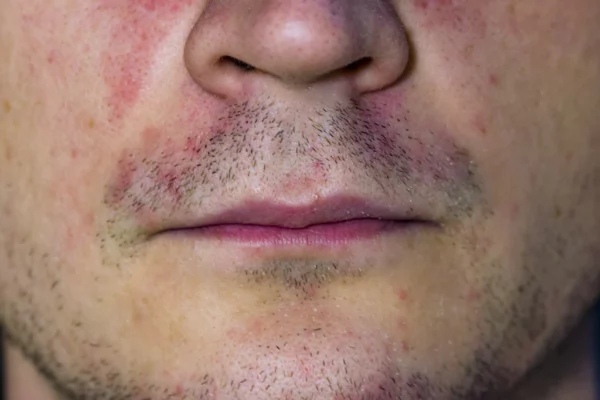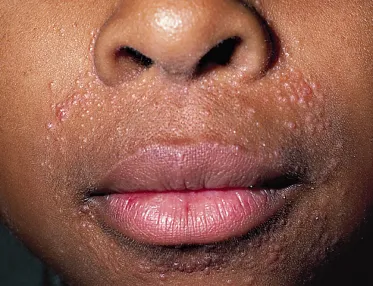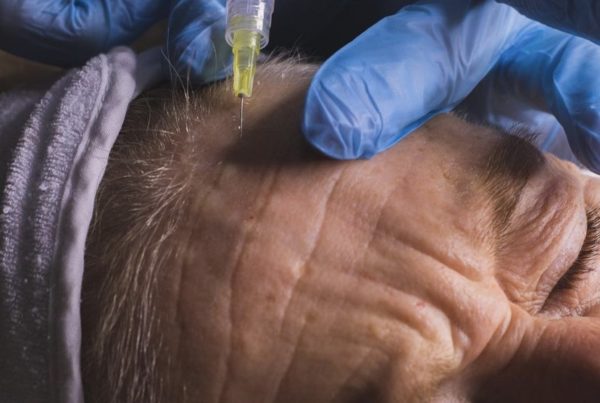Sodium Lauryl Sulfate (SLS) and Sodium Laureth Sulfate (SLES) and Perioral Dermatitis.
What is Perioral Dermatitis?
Perioral dermatitis is a skin condition characterised by small, red bumps or pimple-like eruptions around the mouth, nose, and eyes. The exact cause of perioral dermatitis is not fully understood, but it is believed to be triggered by a combination of factors, including hormonal changes, genetics, and the use of certain topical medications and cosmetics. Common symptoms of perioral dermatitis include redness, itching, burning, and a scaly texture. In some cases, there may also be papules or pustules present.
The treatment of perioral dermatitis typically involves identifying and avoiding triggers, such as the use of certain skin care products that contain irritants like SLS and SLES. A doctor may also prescribe topical or oral antibiotics to manage the symptoms and prevent infection. In addition, using gentle skin care products specifically formulated to help treat inflammatory skincare conditions and avoiding harsh scrubs or exfoliants, instead opting for gentle skin resurfacing, can help soothe the skin and promote healing. If you are experiencing symptoms of perioral dermatitis, it is important to see a skin care professional for an accurate diagnosis and personalised treatment plan.
What is SLS/SLES?
SLS and SLES are harsh surfactants that can strip the skin of its natural oils, making it more vulnerable to irritation. This can cause a breakdown of the skin’s barrier function, leading to increased permeability and a heightened sensitivity to other irritants. For individuals with perioral dermatitis, this increased sensitivity can result in flare-ups of the condition when they use toothpaste or other personal care products containing SLS and SLES.
Additionally, SLS and SLES are known to be irritating to the mucous membranes of the mouth, which can cause further problems for individuals with perioral dermatitis. The mouth is a sensitive area that is prone to dryness and cracking, and using toothpaste containing these ingredients can exacerbate these symptoms.
Where is SLS/SLES found?
Sodium Lauryl Sulfate (SLS) and Sodium Laureth Sulfate (SLES) are commonly found in many personal care products including toothpaste, shampoos, and body wash. While these ingredients are added to provide a foaming and lathering effect, they can also cause skin irritation and trigger perioral dermatitis in some individuals.
SLS/SLES VS other Surfactants
SLS (Sodium Lauryl Sulfate) and SLES (Sodium Laureth Sulfate) are two commonly used surfactants in personal care products such as soaps, shampoos, and toothpaste. Surfactants are substances that help to remove dirt and oils from the skin, but they can also be harsh and cause skin irritation. SLS and SLES are known for their strong foaming and cleaning properties, but they can also be harsh on the skin and more likely to cause irritation than other surfactants.
Compared to other surfactants, SLS and SLES have a high pH and can strip the skin of its natural oils, making it more susceptible to irritation. They can also penetrate the skin barrier, causing itching, redness, and dryness. Additionally, SLES has been found to be contaminated with 1,4-dioxane, a carcinogenic substance, which can further irritate the skin and cause long-term health concerns.
In comparison, gentler surfactants, such as cocamidopropyl betaine, decyl glucoside, and lauryl glucoside, have a lower pH and are less likely to cause skin irritation. These surfactants are often used in professional skincare products, and they are less harsh on the skin while still providing effective cleaning. When choosing personal care products, it is important to consider the type of surfactant used, and opt for gentler options if you have sensitive skin or a history of skin irritation.
Identifying and Avoiding SLS and SLES
Identifying SLS (Sodium Lauryl Sulfate) and SLES (Sodium Laureth Sulfate) in personal care products can be challenging, as these ingredients are often listed under different names or abbreviations. To determine if a product contains SLS or SLES, you should check the ingredient list, which is usually located on the back or bottom of the product packaging. Some common names for SLS and SLES include sodium dodecyl sulfate, sodium salt sulfate, and sodium salt sulfuric acid.
To avoid SLS and SLES in personal care products, you can look for products labeled as “SLS-free” or “SLES-free”. You can also look for alternative ingredients such as cocamidopropyl betaine, decyl glucoside, and lauryl glucoside, which are gentler surfactants that are less likely to cause skin irritation. When shopping for personal care products, it is important to read the ingredient list carefully and choose products that are formulated with gentle, non-irritating ingredients.
In addition to avoiding SLS and SLES in personal care products, you can also take steps to protect your skin and maintain its natural balance. This can include using a gentle, fragrance-free moisturiser, avoiding harsh exfoliants, and using a mild, non-irritating cleanser. By taking these steps, you can help to minimise the risk of skin irritation and promote healthy, radiant skin.
Conclusion
If you are experiencing symptoms of perioral dermatitis, it may be worth switching to a toothpaste that is free of SLS and SLES. Look for toothpastes that contain gentler surfactants, such as cocamidopropyl betaine, or that are formulated for sensitive skin. It’s also important to be mindful of other personal care products that you use, as these may also contain SLS and SLES and could be contributing to your symptoms.
If you are unsure of which products are safe to use, book a consultation with myself, here at DermaGuru, and together we’ll formulate an action plan to help you manage this condition.
Frequently Asked Questions
Q: What is the relationship between SLS and SLES and Perioral Dermatitis?
A: SLS (Sodium Lauryl Sulfate) and SLES (Sodium Laureth Sulfate) are surfactants commonly used in personal care products such as soaps, shampoos, and toothpaste. These ingredients can strip the skin of its natural oils and cause irritation, making it more susceptible to conditions like perioral dermatitis. In some cases, SLS and SLES may trigger or exacerbate perioral dermatitis symptoms.
Q: How can I manage Perioral Dermatitis?
A: The best way to manage perioral dermatitis is to identify and avoid any triggers. This may involve switching to gentler skincare products, avoiding irritating ingredients like SLS and SLES, and avoiding the use of topical steroids. Over-the-counter creams containing hydrocortisone can help to relieve itching and redness, with a phformula plan able to help tackle the skins reaction to SLES and SLS. Please note, prescription topical or oral antibiotics may be necessary in severe cases.
Q: How can I avoid SLS and SLES in personal care products?
A: To avoid SLS and SLES in personal care products, look for products labeled as “SLS-free” or “SLES-free”. You can also check the ingredient list and look for alternative, gentler surfactants such as cocamidopropyl betaine, decyl glucoside, and lauryl glucoside. When shopping for personal care products, it is important to read the ingredient list carefully and choose products that are formulated with gentle, non-irritating ingredients.
Q: Is it possible to treat Perioral Dermatitis at home?
A: Yes, perioral dermatitis can be treated at home by avoiding triggers and using gentle skincare products. Over-the-counter creams containing hydrocortisone can help to relieve itching and redness. However, in severe cases, prescription topical or oral antibiotics may be necessary. If you have persistent symptoms or concerns, it is best to consult a skincare professional for personalised treatment advice.
Skincare Concerns?
Book a consultation and we can formulate a treatment plan to address any concerns you may have regarding your skin.








